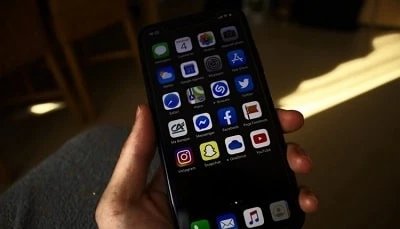Mobile devices have become ubiquitous. According to Statista, there were 298 million devices in the US by 2021. That is one for every American, excluding infants and toddlers.
Mobile devices not only offer the facility of calling and SMS but also fast access to the internet.
Mobile applications have revolutionized the way we access the internet. Click one and it shows you the weather, yet another lets you trade stocks, and the third lets you pay for your coffee without leaving the table.
What is the process of mobile application development? We take a look.
What is a mobile application?
A mobile application is a software that is designed to work with a mobile smart device.
A smart device is a portable computer that can be carried around and uses an operating system (usually Android or iOS) and employs ARM microprocessors (this distinguishes it from laptops that use x86 architecture).
Mobile applications run on phones and tablets. They are highly specialized and do not use a browser-based access point. Mobile application development technologies include Java, React, Kotlin and Swift.
Types of Mobile Apps
- Native
These apps are made for one specific OS.
There are two dominant operating systems in the market: Android from Google and iOS from Apple.
A native app for iOS won’t work with Android and vice versa. This means higher development costs, but these apps are also the most responsive. A mobile application development company can help you decide the type of app you need.
Further, they can use the system resources better.
2. Web Apps
Have you seen how some apps are lightweight and look almost like their browser counterpart? These are web apps.
What the app does is use an ultra-light browser to access the backend. It seems to the end-user like an app, but is actually a browser with added features.
PWA or Progressive Web Apps technology is used by Facebook, Reddit, Telegram, and many other companies.
Note that it is not the technology of choice if your app would need access to the camera, GPS, and similar hardware.
3. Hybrid Apps
A web app that has some characteristics of a native app to allow it to access the hardware. They are built using web technologies such as JavaScript, CSS, and HTML and most use a framework such as React Native.
Gmail and Instagram are the best-known examples of hybrid apps. Hybrid apps usually have lower mobile application development cost compared to full-fledged native counterparts.
Stages in Mobile Application Development Process

- Develop an idea
Unlike a website, an app is rarely created to disseminate information. An app offers a utility. From Uber to WhatsApp, everything on a phone offers a service.
The background of the app is the service you want to offer. You might seek to differentiate your offering by unique features or lower price.
2. Create the app concept
You can also call it the product roadmap.
- What are the operating systems you are targeting?
- Will it be a native app or a PWA?
- Which tech stack would you like to deploy?
These are questions you have to sort out at the second stage. It also provides you with an idea about the cost of developing an MVP, Minimum Viable Product.
MVP is an important milestone. It helps you to receive feedback and also lets you design the more expanded version.
3. App Design
UI and UX are two acronyms that you are going to hear a lot. User Interface and User Experience are crucial for any app to succeed.
Put simply, UI is the way an app looks and the tools are laid out. Some apps have a cluttered UI with all the key features on display and others look neat and minimalistic.
UX, on the other hand, is the cumulative experience of the app users’ interactions. Do they feel comfortable while using it? Are the features within easy reach? Does the app respond? These and many more factors play a role in determining successful UX design.
4. Wireframe
The wireframe is the app’s blueprint. It is a mockup that offers a look into the user’s journey from the moment they tap on the app icon.
A wireframe need not be high tech. Clean two-dimensional sketches on several sheets of paper are an excellent way to approach the process.
The need for the wireframe is to communicate
- The navigation hierarchy
- The complete feature set
- Transition through an app
5. Testing
Before you list an app in the Play Store, you need to test it for bugs. Software is prone to failure and leads to frustration.
If your app crashes often, there is no way to recover from the negative impression that would generate.
App testing not only determines if it is stable but also if it is secure. Though by and large smart devices are protected at the OS level (apps have limited access to the other parts of the device) exploits using apps are not unknown.
To sum it up
App development is a never-ending process. There are constant tweaks and additions to features.
The app development process is resource-consuming, but nothing beats the feeling you get when you find glowing reviews provided by users.
0



